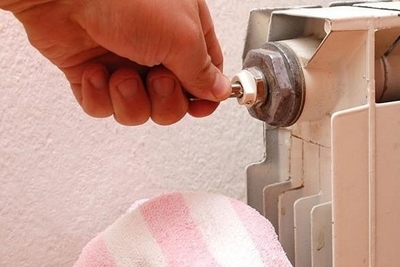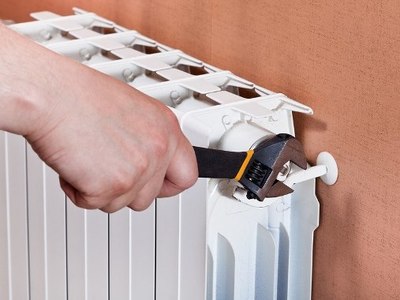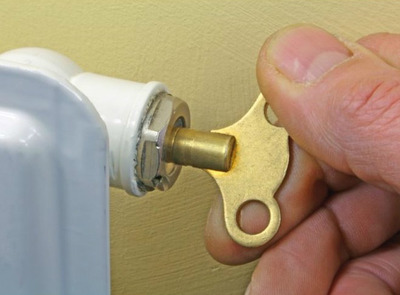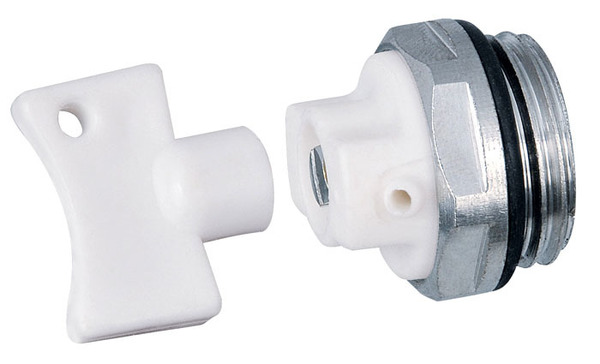Airlock: Why does air appear in the heating system of a private house?

Everyone wants to feel a cozy atmosphere in their home. And the air temperature, which is supported by heating.
If in apartment buildings this is much easier, since there is central heating, then in a private house this is not the case.
One of the problems is air locks, which delay or completely block the passage of the coolant to all areas. This leads to noticeable heat loss and discomfort. The house just gets colder. To fix these problems, you need to figure out the cause.
Why does air appear in the heating system?
The main reasons for traffic jams:
- Incorrect filling coolant.

- Incorrect installation, leading to air accumulation in the contours, corners and bends of pipes.
- Loose connections, which causes a leak of the coolant itself and, as a rule, air to enter the system.
- Repair, installation, during which airing it definitely happens.
- Fresh water inlet, containing a lot dissolved oxygen, which, in turn, when heated, expands and accumulates in the system.
- Corrosion metal inside the system.
- Malfunction (cracks) radiators and pipes affect the system in the same way as loose connections, only adding the possibility of a rupture.
How to detect
If the temperature in the house has dropped for no apparent reason, then most likely somewhere air has accumulated, which does not allow for uniform distribution of the coolant. It is not difficult to find it - it is enough to feel the pipes for their heating. Where the coolant passes freely, the sections will be the hottest.
Important! If the area noticeably colder, then, consequently, the coolant does not pass there due to clogged debris or air. It is possible tap, where there is a plug, the sound of metal will be louder and more resonant.
How to remove an airlock
The movement of the coolant is carried out in different ways:

- With the use of circulation pump, forced circulation of the coolant.
- Without application circulation pump, due to natural convection. Gravity system.
The schemes themselves are different: for example, systems with a circulation pump have a closed expansion tank, while systems with a natural flow of coolant have an open one.
Consequently, the methods of elimination and prevention will be fundamentally different.
In a forced circulation circuit
In forced circulation circuits, the following are most often used:
- Automatic air vents, releasing air automatically, thanks to the internal device. They are best placed at the highest points heating systems or in critical places where there is the greatest probability of air accumulation (corners, bypasses, etc.). For the best effect, a pipe should be connected to the place where the automatic air vent will be located. at a slight angleso that both air and liquid move in the same direction to facilitate its removal.
- Manual air vents - Mayevsky crane, to release accumulated air. Since it can simply get stuck inside the radiator and not pass further. Air accumulates in the upper part of the radiator, which means that the tap itself is installed into the upper branch pipe from the end, for easy removal of air locks.
- A safer way is "Security Group", which includes air vent, pressure gauge pressure and safety valve, to relieve excess pressure in the system. This device is the most popular among installers, as it does not require additional connections, is easy to install and includes everything necessary to ensure the safety of the boiler and the operation of the heating system itself. Control and release of air and excess pressure at one point has a clear advantage.
- Air separator. Unlike other devices, this unit removes the air dissolved in water. It converts it into bubbles, which are immediately released through the built-in air vent. This eliminates the risk of expansion when heated, damage to pipes, radiators or the system as a whole.
With natural circulation
In a natural circulation system with top distribution, air is removed directly through open expansion tank. The main line itself in this case should be supplied vertically to the tank, which is placed at the highest point, to ensure safety and natural discharge. The return flow should be placed at an angle.
If the lower wiring is installed, then the same methods should be followed as when using a circulation pump.

Photo 1. This is what the Mayevsky valve looks like, which is used to bleed air and is installed at the highest point of the radiator.
Whatever the main method of removal, be it an automatic air vent or an expansion tank, do not neglect Mayevsky taps. They are best installed on each heating radiator, because if air accumulates in them, it will be easier and faster to remove it through these valves.
Useful video
Check out this video to see how to remove an airlock.
Why is it necessary to remove air locks in a private home?
To sum it up, it should be remembered that air locks not only interfere with comfort, reducing heating efficiency at home, but also have a destructive effect on the system itself. With prolonged contact with metals, this leads to corrosion and destruction of pipes, which leads to leaks and breaks.






Comments